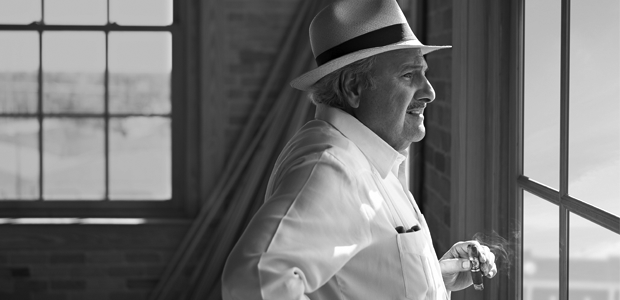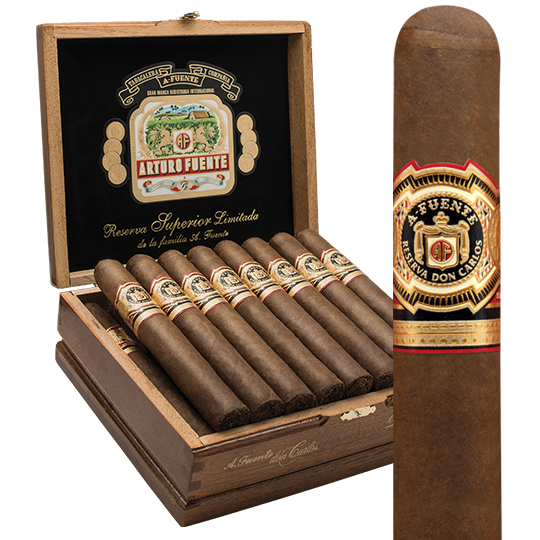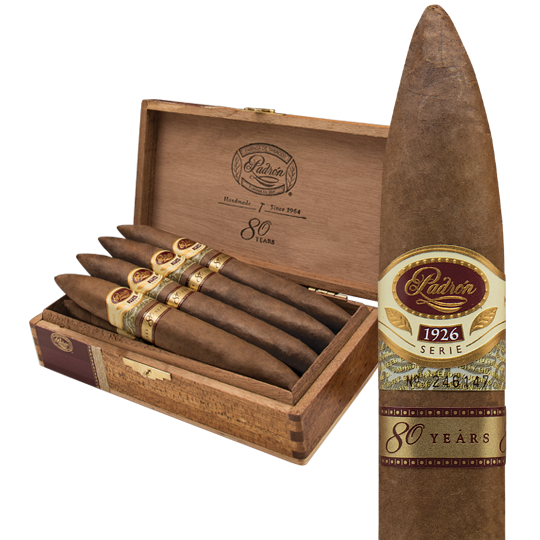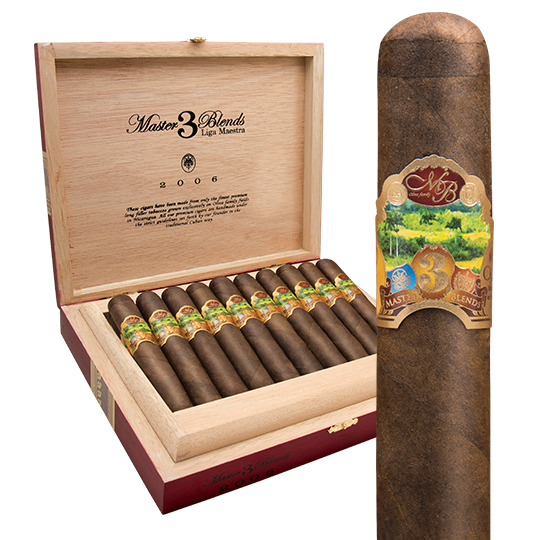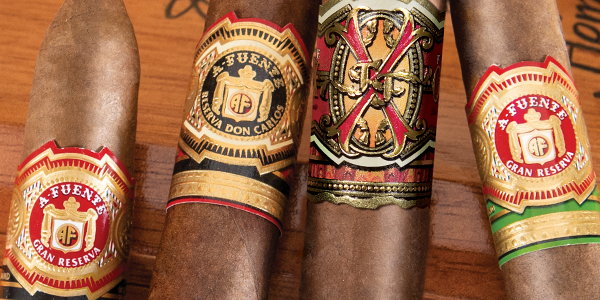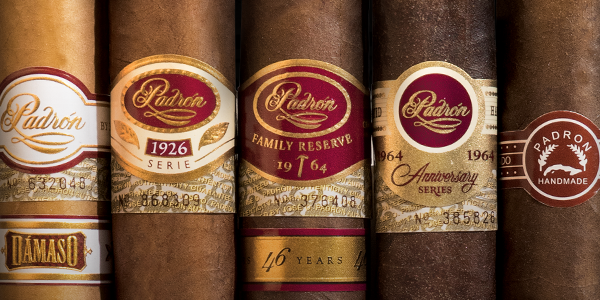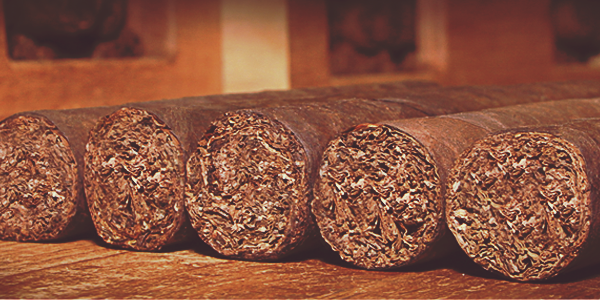Passing of Cigar Patriarchs
Premium cigars, for the most part, are very personal. They are touched by dozens of hands before they reach yours. The leaves are smelled by the noses of cigar-makers whose names are on the cigar bands. The families of those cigar-makers generally work in the business. Fathers teach sons and daughters and they carry on the legacy. About two years ago, I was explaining this to a young man completely unfamiliar with the industry who was smoking his first cigar. It was at a wedding. Cigars have always been celebratory and I explained to the rookie that he should also celebrate the name on the cigar he was smoking, an Arturo Fuente Chateau Series Royal Salute (7.625 x 54). It was a large cigar for his first, but he was enjoying it. I explained to him that the family that made it was extraordinary and that the patriarch had just recently died.
Carlos Fuente, known to most in the industry as “Senior,” passed away in the summer of 2016. A year later, two other ‘leones’ (lions) of the industry also gave up this earthly realm. José Orlando Padrón and Gilberto F. Oliva both died in December of 2017. Their stories and contributions to a pursuit we all love are very well worth relating to people having their first cigars and they are all worth remembering as you smoke your hundredth. Without these three lions, the cigar industry would never be the same and the cigars you smoke today would not be as good.
Carlos Fuente
“Senior” began his career in the cigar business in the 1940s helping to make cigars on the back porch of the family home in Tampa. His father, Arturo Fuente, had opened a cigar factory there in 1912 after immigrating from Cuba. The factory burned down 12 years later and the business resumed only in 1946 with Carlos and his older brother Arturo Jr. pitching in. They rolled cigars from tobacco imported from Cuba. Business wasn’t particularly good, but Carlos toughed it out.
In 1958, Carlos, more interested in cigars than was his brother, received ownership of the business from his father. Arturo Fuente cigars were a local brand at the time. That changed when the US embargo of Cuba was imposed. No more Cuban tobacco for the Fuentes. No more Cuban cigars legally available in the US.
As Carlos Fuente told Cigar Aficionado, “I feel the embargo put everybody level. People had to shop around to find a different taste that they liked.” Senior found Nicaragua and the Fuentes operated there until 1978 when the factory burned. Again. The company moved to the Dominican Republic and began to thrive.
In Santiago, in the mountains in the middle of the Dominican Republic (DR), Senior and his son, Carlos Fuente, Jr., known to everyone as Carlito, developed what was perhaps the most significant contribution to the region’s cigar industry. Everyone had always said that you couldn’t grow good wrapper leaf in the DR. In 1995, the Fuentes released the Fuente Fuente Opus X with a shade grown wrapper reminiscent of Cuban cigars.
Today, Carlito and his sister Cynthia carry on Senior’s legacy. The Don Carlos Eye of the Shark (5.75 x 52) was named the 2017 ‘Cigar of the Year’ by Cigar Aficionado. In 2018, Carlito announced the company would be returning to Nicaragua to make cigars, calling it a tribute to his father. Senior is immortalized also with the Don Carlos line of cigars made by the company, and also for being a gentleman, quiet-spoken and a man who solved problems.
José Orlando Padrón
Orlando Padrón embodied the quintessential rags-to-riches Cuban immigrant success story. Thankfully, that success came in the cigar business. Orlando grew up in a cigar family. His grandfather went to Cuba’s tobacco-growing Pinar del Rio province from the Canary Islands and began growing tobacco.
“My grandmother had a little table in her house where she would make cigars for my grandfather, and for the entire family,” Padrón told Cigar Aficionado in 2014. “Two things they were never without—wine and cigars. As a young boy, I saw that in my house. My grandfather every day would wake up, and every time I saw him he was looking at a cigar. Rolling it in his hand. Always touching tobacco.”
Orlando Padrón left Cuba and landed in Miami in 1962. He worked hard as a carpenter, but could not make enough to support the family.
“In 1962, I arrived in Miami, an unknown city in a foreign land. I had to start from zero,” José Orlando said. “At first, I received $60 monthly, as government aid given to Cuban refugees. I was 36 years old, strong, and in good health. Every time I cashed that check, I felt like a burden on the country that had taken me in. For many days, I looked for a job and could not find one.”
Using a small hammer, el martillito, in his carpentry, Orlando finally saved enough to open Padrón Cigars in 1964, producing about 200 cigars a day with just one roller. It was made entirely from Connecticut Broadleaf tobacco. Orlando found that very limiting. He began searching for other tobacco and found Nicaragua in 1967. He visited and famously dubbed the Central American nation “the second coming of Cuba” for its rich soil. In 1970, Padrón opened a factory in Estelí. In 1978, the factory was burned down during the Nicaraguan civil war. Orlando rebuilt the factory immediately.
In 1978, Orlando was also part of a delegation of Cuban exiles who traveled to Cuba to meet with Fidel Castro and successfully negotiate the release of political prisoners on the island. The effort was met with bombs at the Padrón facilities in Miami. Three times between 1979 and 1983 the Padrón offices were the target of anti-Castro Cubans.
“He was so much more than just a cigar guy,” said Jorge Padrón, Orlando’s son who now heads up the company.
Today, Jorge, his brother, Orlando, and other siblings, nephews and family members work in Miami and Nicaragua. Padrón cigars have been named Cigar Aficionado’s ‘Cigar of the Year’ an unequalled three times. The Padrón 40th Anniversary Natural (6.5 x 54) won in 2004; the Padrón 1926 Series No. 9 Natural (5.25 x 56) in 2007; and the Padrón Family Reserve No. 45 Maduro (6 x 52) won in 2009. Padrón cigars are widely regarded as among the best made in the business.
Even into his later years, Orlando Padrón would constantly travel from Miami to Estelí, something Jorge does now. In Nicaragua, Orlando would awaken early and light a cigar before walking next door to the factory. There, he would literally put his nose into it, smelling leaves that were aging. “Tiene buena nariz,” he would declare. It has good nose. Orlando’s unerring sense has left a legacy we all enjoy. The little hammer serves as the brand’s emblem.
Gilberto F. Oliva
Nicaragua ultimately played a huge part in the story of Gilberto Oliva and he returned the favor. But let’s start many years earlier, when Gilberto Oliva was still working in Cuba after the Castro revolution. Gilberto’s grandfather, Melanio, had been the first member of the family, in 1886, to grow tobacco. Gilberto continued to do so in Pinar del Rio, Cuba, until 1964, after smaller businesses fell to nationalization. Gilberto left for Spain, then moved to Nicaragua.
Oliva began traveling the Caribbean and Central America in search of tobacco that could be as good as what he had grown in Cuba. He grew tobacco in some of those countries, then moved into making cigars in Honduras for Nestor Plasencia. In 1995, Oliva and his son, Gilberto Jr., created a namesake cigar within the Plasencia operation. The Gilberto Oliva cigar was made with the usual Dominican and Nicaraguan fillers, Dominican binder and an Ecuador Connecticut wrapper. A year later the Olivas opened their own factory in Nicaragua and changed the name of the brand simply to Oliva.
Facing limited success, Oliva turned to using the more affordable Nicaraguan tobacco the company was growing itself. Never again would they import filler.
“Every year my father continued to grow tobacco and put it away,” said José Oliva, one of Gilberto’s five children. José would become president of the company when his father passed away. “It allowed us to win people over through the consistency of the cigars we were producing. Right from the beginning, the commitment was always more tobacco.”
That move to all-Nicaraguan cigars served not only the Olivas well, it showed the world how good Nicaraguan tobacco could be.
“I have grown tobacco in Cuba, Mexico, Honduras, Panama and even the Philippines,” Gilberto Sr. told Cigar Aficionado in 2010. “Nothing compares to Cuba like Nicaragua. Northern Nicaragua enjoys all the natural blessings for great Habano.” Today, Oliva is the second-largest grower of Cuban-seed tobacco in Nicaragua.
In 2014, the Oliva Serie V Melanio Figurado (6.5 x 52) won top honors as Cigar Aficionado’s ‘Cigar of the Year.’ In 2016, the Oliva Cigar Company was sold to J. Cortès Cigars N.V., a Belgian company, with José staying on as CEO. In 2011, José ran and won a seat in the Florida House of Representatives. Seven years later, he was elected speaker of that chamber. José stepped down as the company’s chief and now serves as an advisor. Undoubtedly, Gilberto Oliva would be equally proud of his son’s successes both inside and outside the world of premium cigars.




